N493 Project: Core Determinants of Health in Native American Community
VerifiedAdded on 2023/01/20
|9
|1015
|64
Presentation
AI Summary
This presentation analyzes the core determinants of health within Native American communities, focusing on how various factors impact their health outcomes. It examines community demographics, including gender distribution and social structures, highlighting that 68.5% of people are living in family and 31.5% of non family households. The presentation delves into social determinants such as education levels, employment rates (with a high unemployment rate of 69% in 2014), physical environment (including smoking rates), child development, and the influence of culture (Mississippian, Adena, Hohokam, and Iroquois cultures). The presentation also reviews the health services provided by the U.S. Department of Health and Human Services, coping skills, social support networks, and the impact of genetic endowment, particularly the risk of cardiovascular diseases. The presentation references several studies to support its findings and emphasizes the interconnectedness of these determinants in shaping the health and well-being of Native American populations, identifying challenges and providing insights for improving healthcare interventions.
1 out of 9
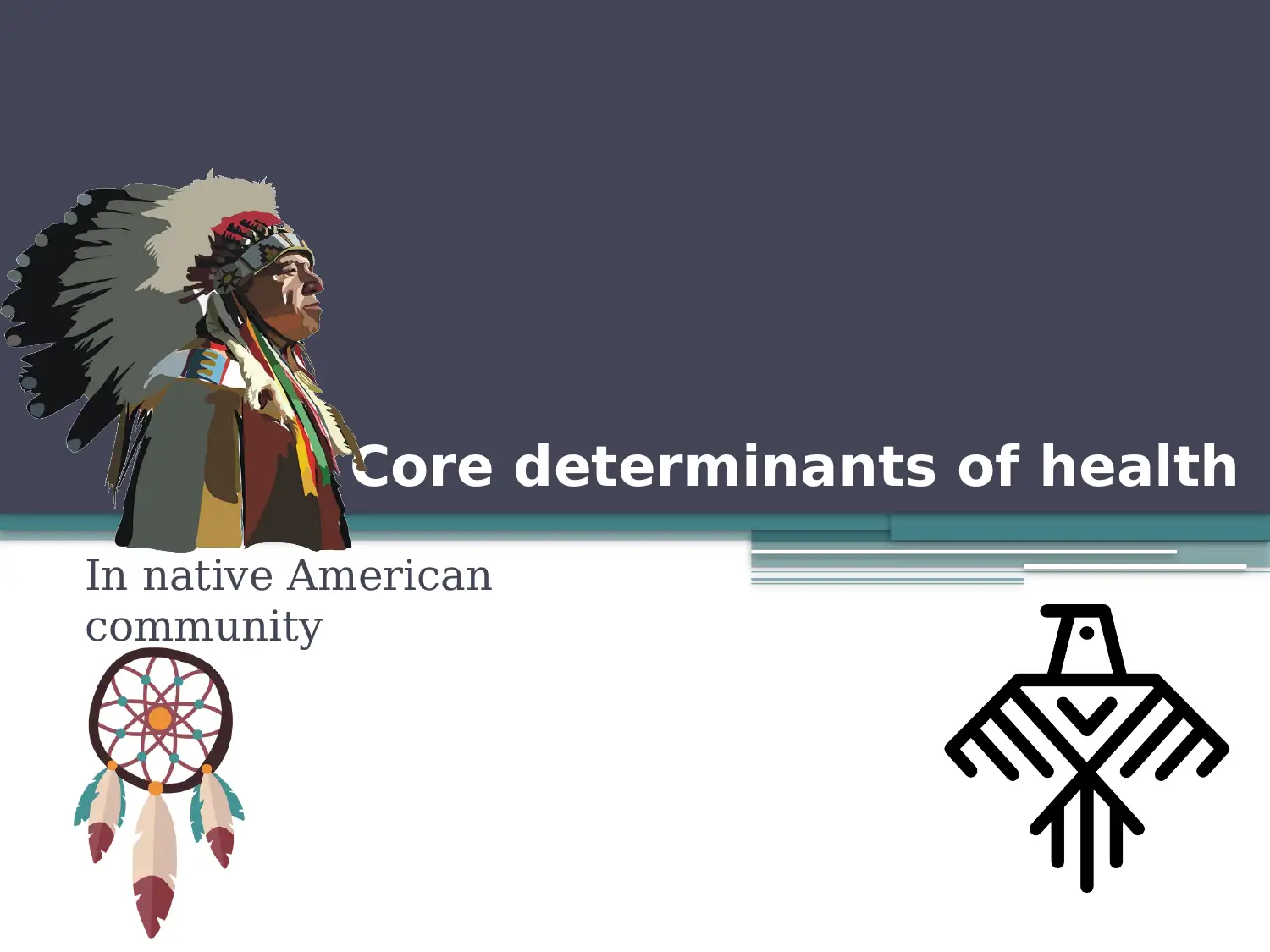
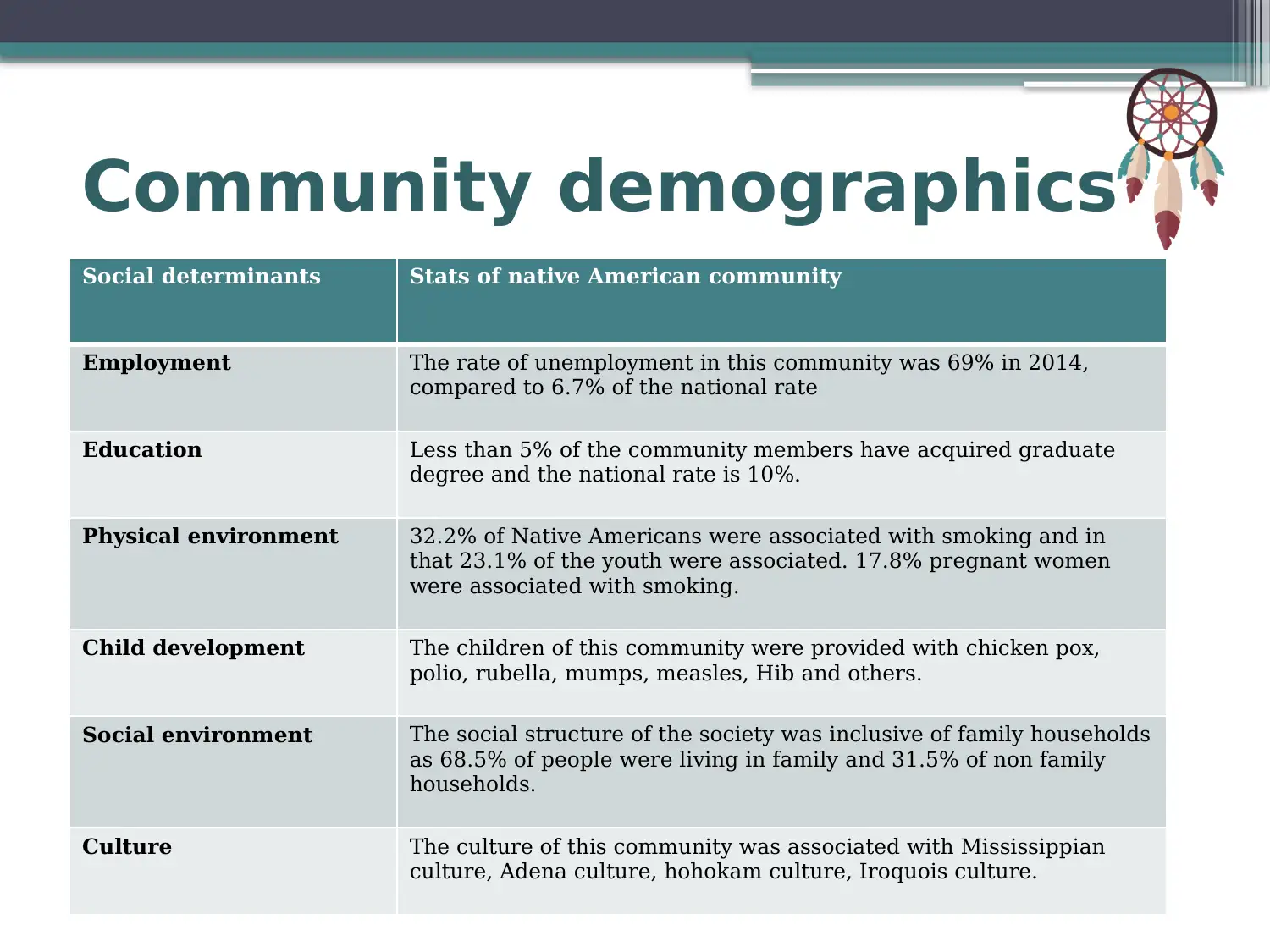
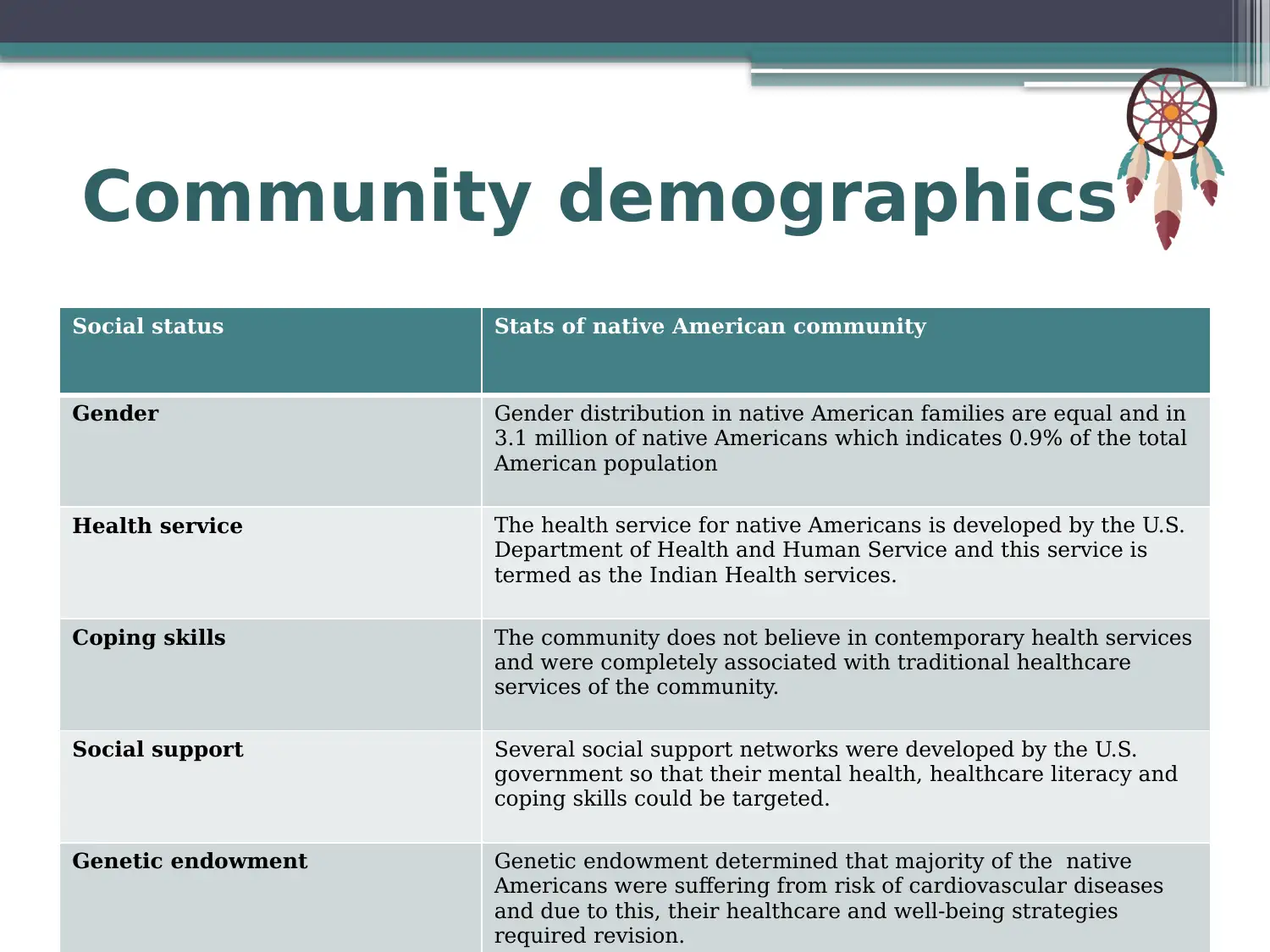

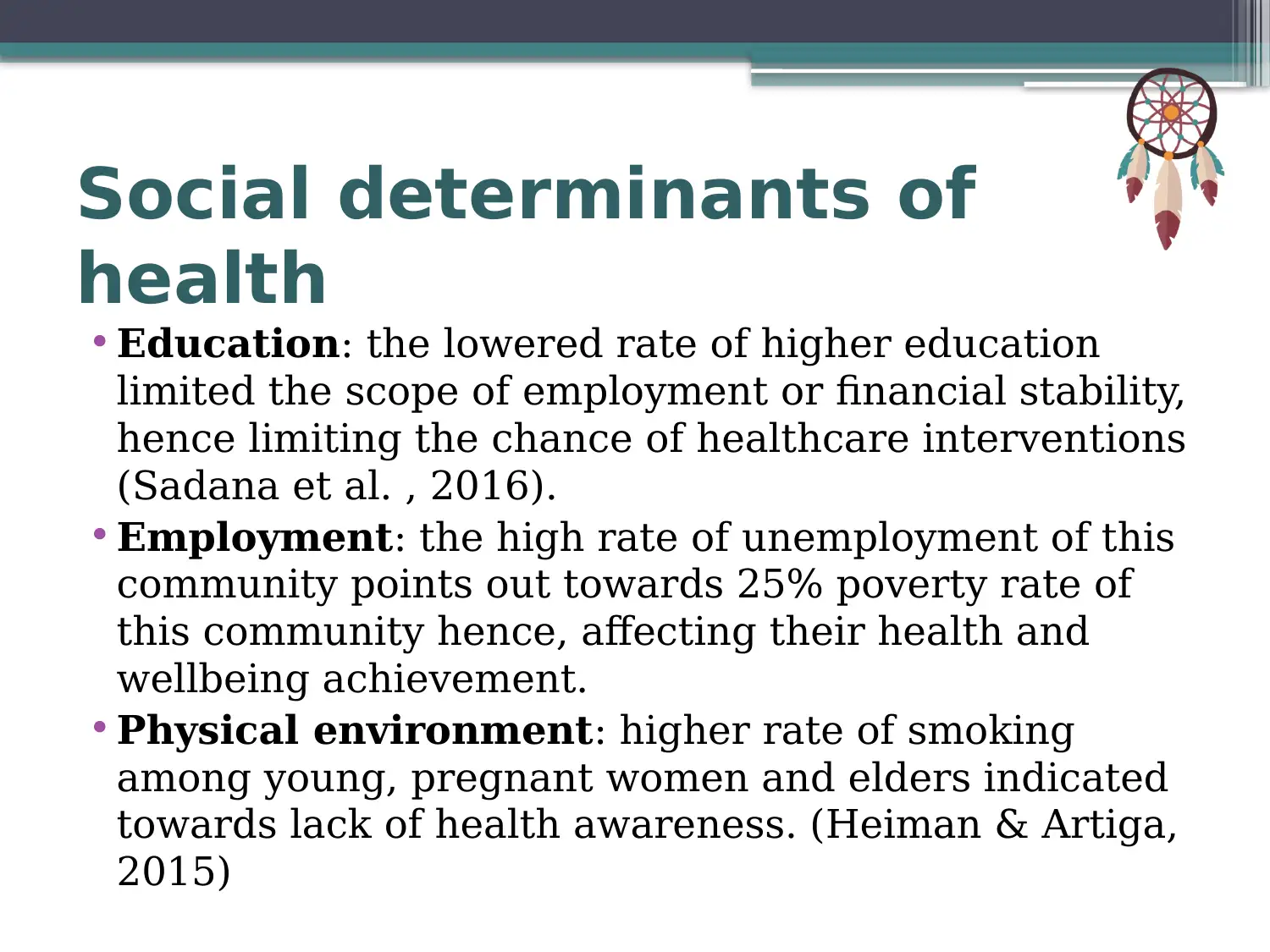
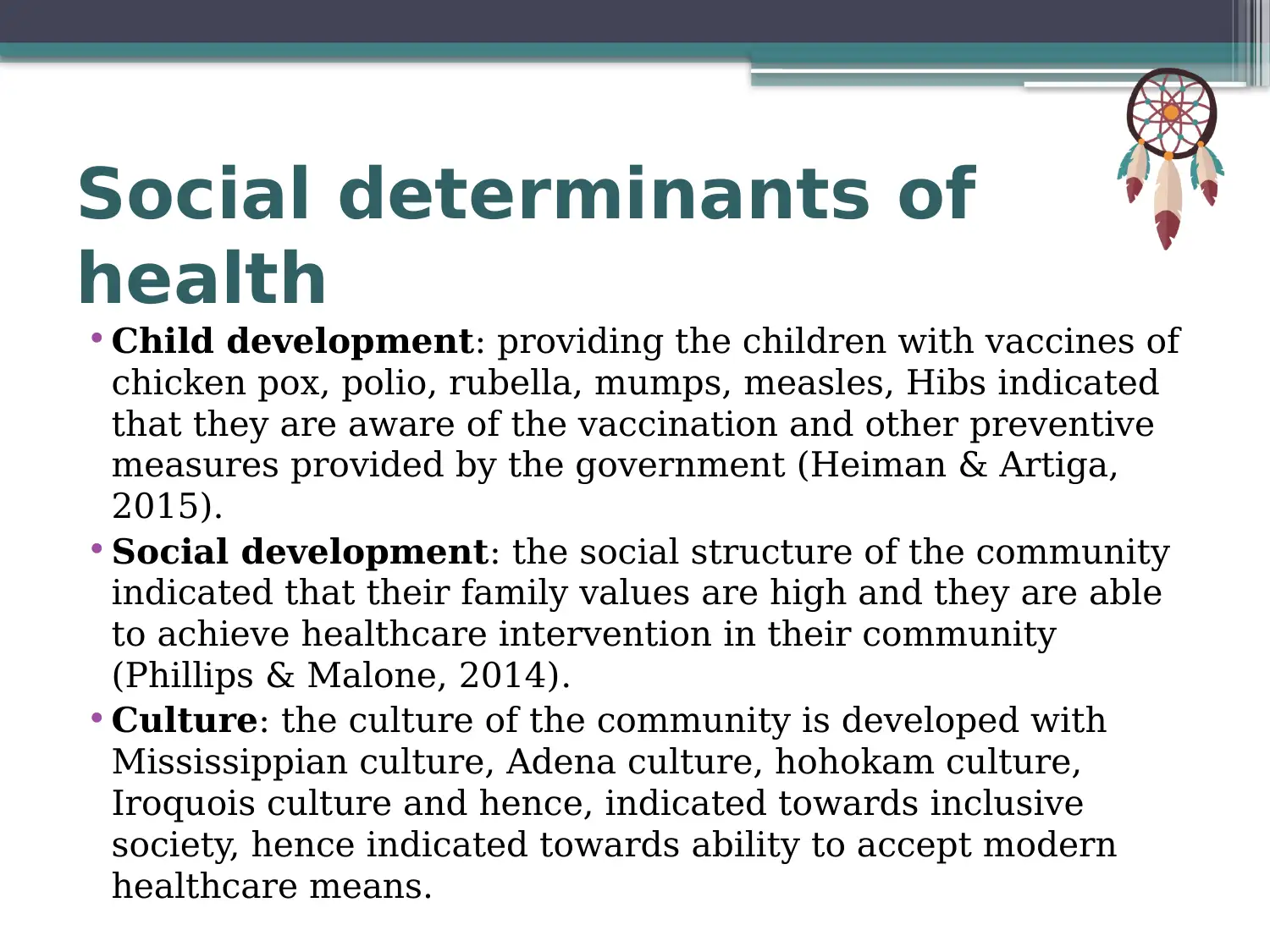
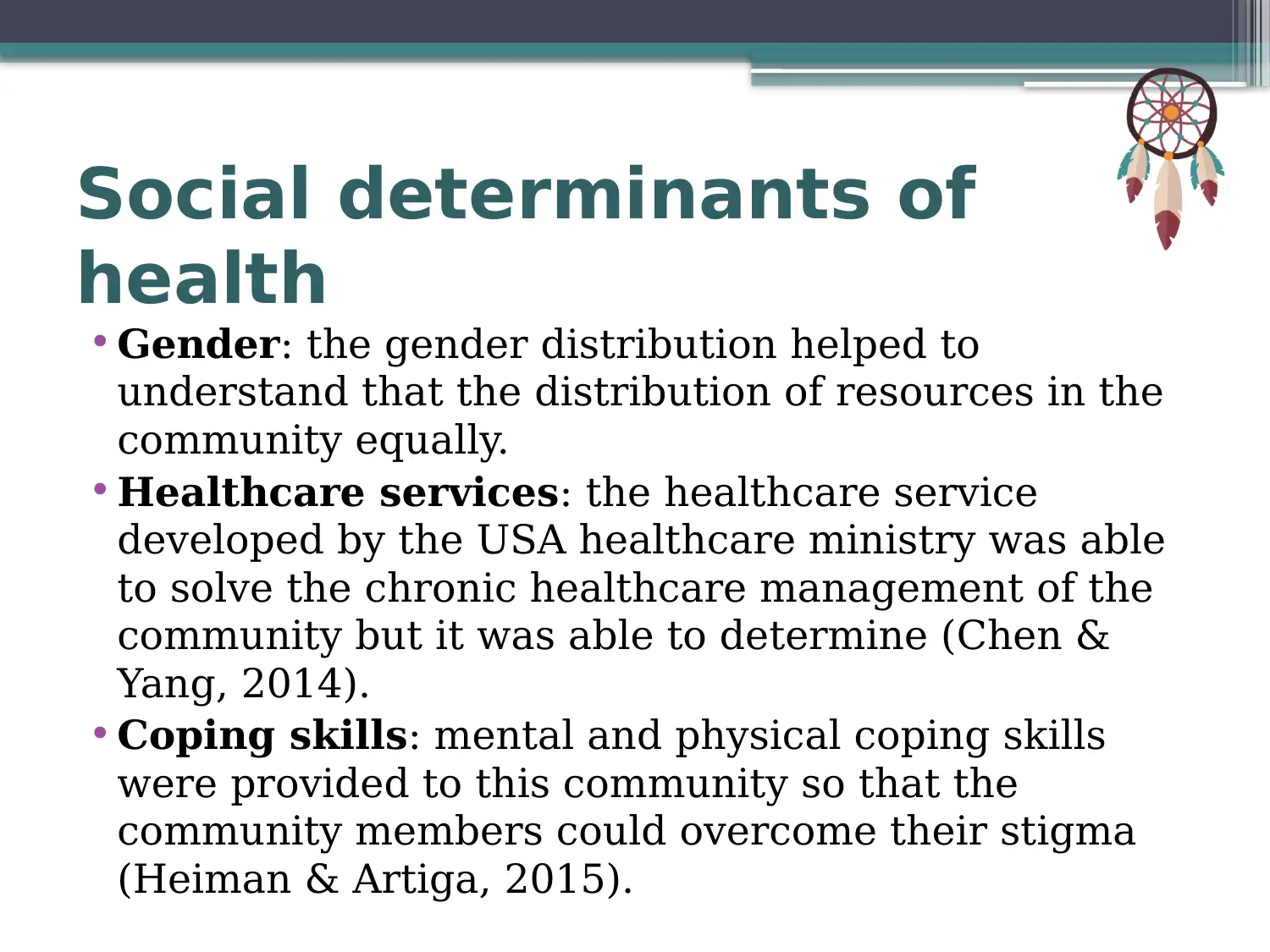
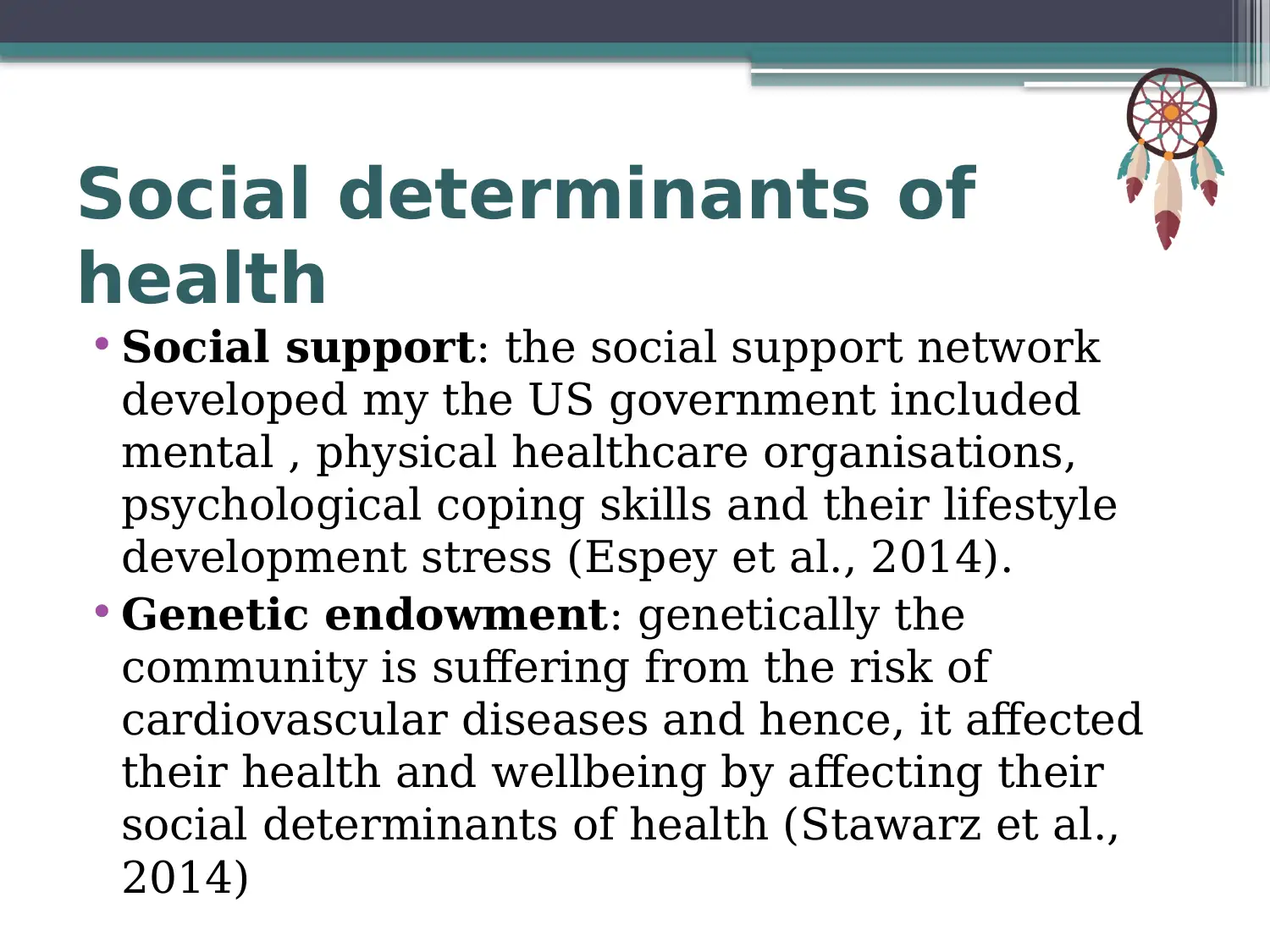
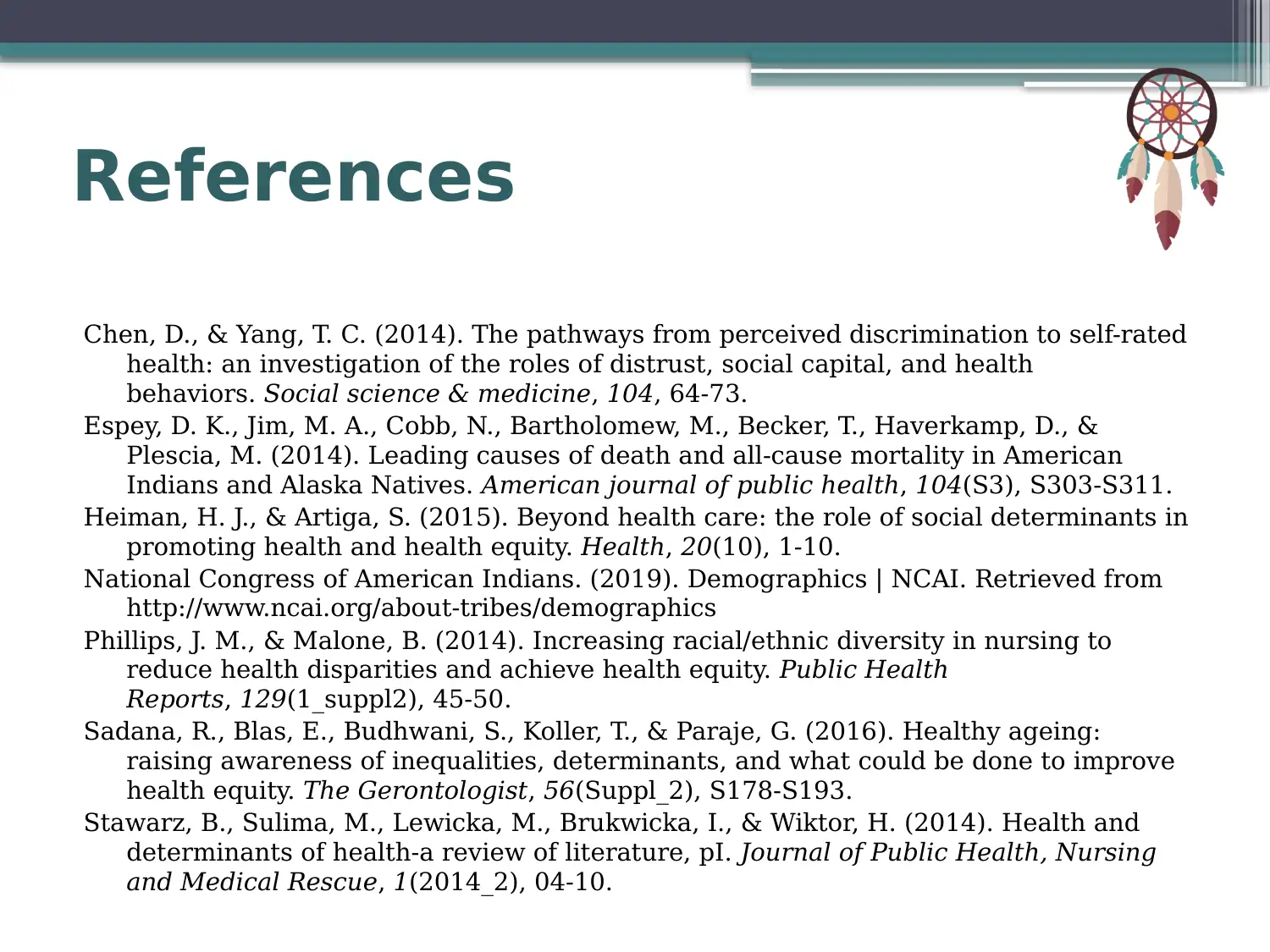
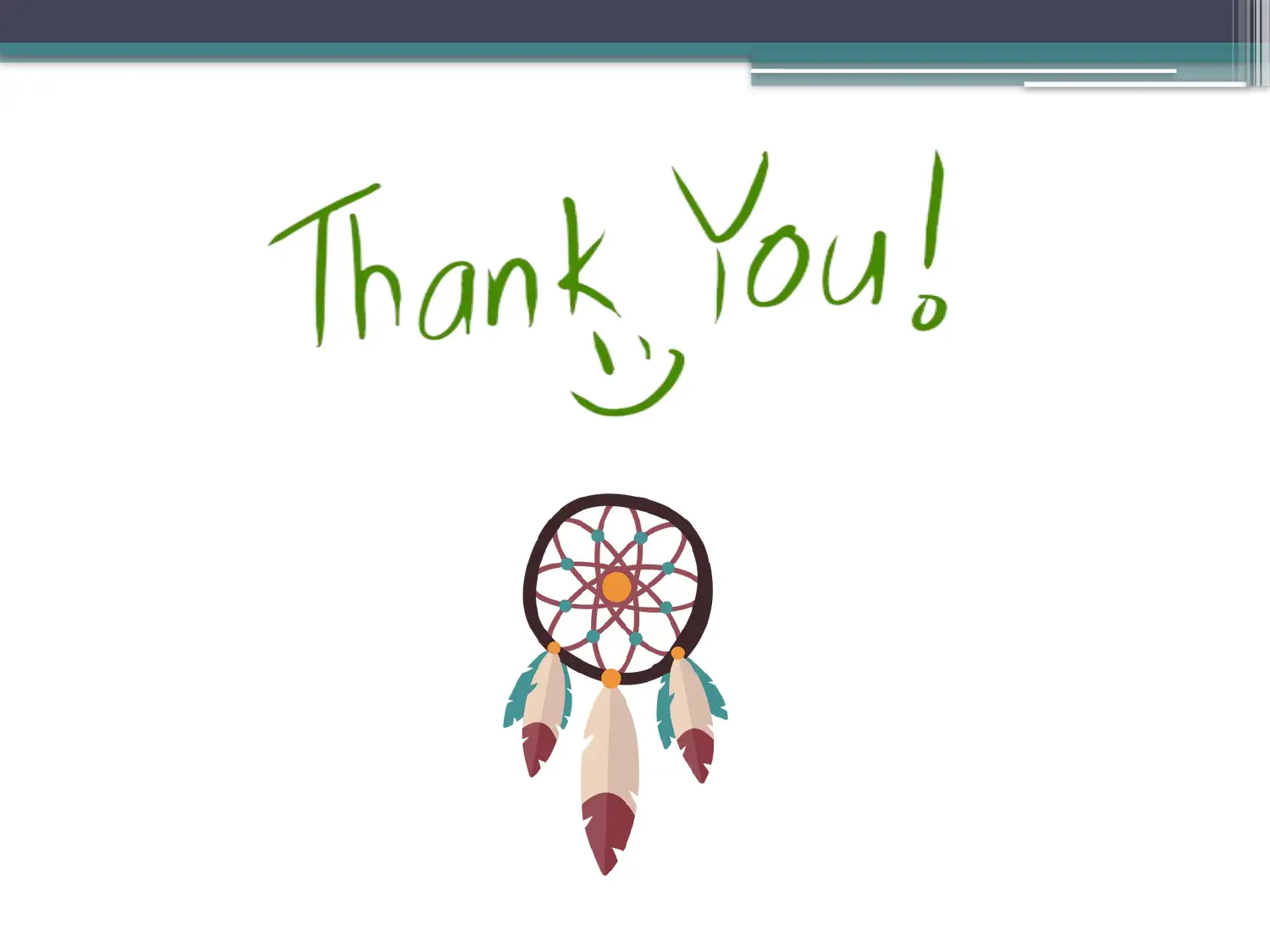

![[object Object]](/_next/static/media/star-bottom.7253800d.svg)